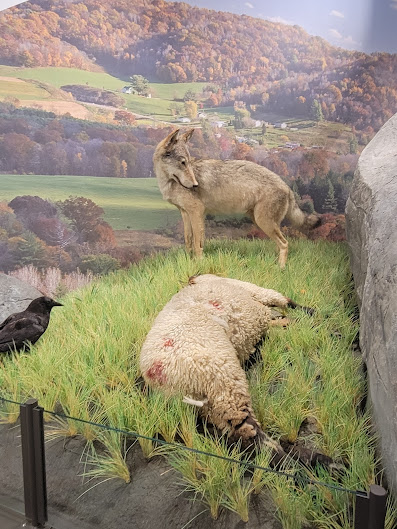We visited the International Wolf Center at Ely, Minnesota. The rich farmlands in south and west Minnesota contrast sharply with the forest areas to the north. It is this area to the north, extending to the Canadian border that make for wolf habitat.
Ely, Minnesota lies to the north of Duluth and all roads end at Ely as you enter the Boundary Waters Canoe Area. Much of the wolf research in America comes out the Ely area.
At the wolf center, you see live wolves plus many interesting displays.
Here is an update on the wolves of Minnesota.
Things to know about Minnesota’s wolf population
Minnesota has a long legacy of protecting wolves. When they disappeared from the rest of the country, they made their last stand in Minnesota. Since then, the state has worked hard to help wolves flourish. The state’s Department of Natural Resources says it is “committed to ensuring the long-term survival of the wolf in Minnesota.”
In the 1960s, the population was estimated to be as low as 350. Wolf numbers trended upward during the next 40 years, peaking at about 3,000 from 2002 until 2005. Since 2014 the population estimate has been about 2,700 with a current population estimate of 2,699.
Wolf packs generally consist of a mated pair and their offspring. On average wolf packs have 4-6 wolves in each pack, but sometimes have as many as 10-12. Young wolves typically disperse from the pack at one to three years of age. The distance they disperse depends on many factors, but the goal is typically the same—to find a mate and a vacant territory. Wolves have been known to disperse as far as 550 miles away.
Wolves commonly live six to eight years but up to 13 years is possible. Common causes of death in the wild include starvation, injuries from other wolves, disease and sometimes injuries from prey animals. Humans have the biggest influence on wolf populations through mortality causes such as wolf removal for depredation control (about 200 per year), poaching and various types of accidents, including vehicle collisions.
A wolf pack territory averages about 50-60 square miles. Wolf territory size is primarily influenced by prey density. Where deer density is high, a territory may be less than 10 square miles, but where deer density is low it can be over 100 square miles. Territory size can also be influenced by the amount of competition from other packs.
















No comments:
Post a Comment